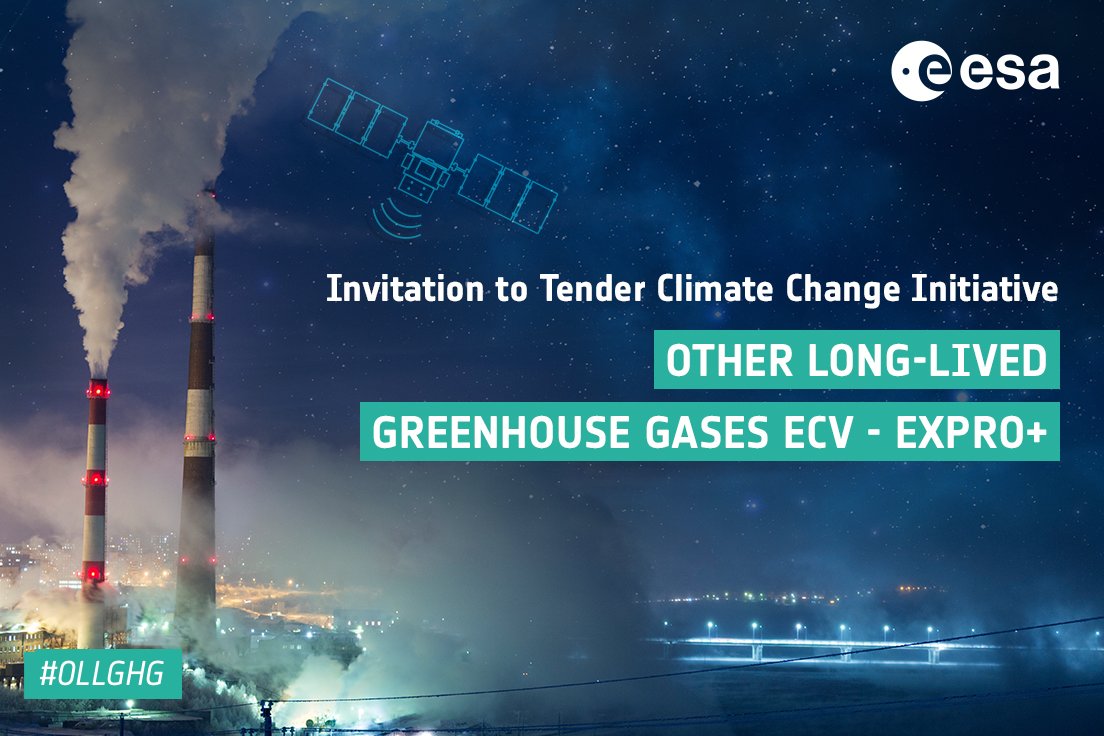7 de febrero de 2023
‘Other’ long-lived greenhouse gases focus of new ESA activity
Project aims to how satellite data help better understand the role of halogenated GHGs and N2O on the climate system
UPDATE: Closing date for potential bidders is extended to 14 April 2023.
Although carbon dioxide (CO2) and methane (CH4) are the primary greenhouse gases of concern for scientists and policy-makers focussed on limiting global warming, others that have a big impact and are, as yet, not as well understood. Deepening understanding of these gases using satellite observations, is the focus of a new invitation to tender by ESA as part of its Climate Change Initiative.
“Other long-lived greenhouse gases” (OLLGHGS) refer to a basket of heat-trapping gases, excluding CO2 and CH4, with atmospheric lifetimes of at least a few years. They incorporate several halogenated carbon compounds such as carbon tetrachloride (CCl4) as well as nitrous oxide N2O and have a major impact on the climate, together accounting for nearly 20% of the increase in radiative forcing since pre-industrial times. The importance of these gases on the Earth system is reflected in their inclusion in the GCOS GHG Essential Climate Variable.
Chlorine-containing OLLGHGs are also a main cause of anthropogenic ozone depletion and are regulated internationally under the UN Montreal Protocol on Substances that Deplete the Ozone Layer and its subsequent amendments. A notable omission, however, is N2O which is now the most significant unregulated anthropogenic ozone-depleting pollutant and whose current unmitigated emission to the atmosphere is undermining the achievements of the Montreal Protocol. Satellite observations provide an opportunity to monitor these gases on a global level to help inform policies to check emissions.
Invitation to tender
The new research project aims to evaluate the potential of existing satellite-based observations to support both climate science and service applications and to assess the scope and value for further ESA-funded R&D on OLLGHGS and aims to exploit Earth Observation archives that ESA together with its Member States have generated over recent decades.

To date, a number of satellite instruments have been launched that provide information on the atmospheric abundance and distribution of the OLLGHGs, notable examples being: Envisat MIPAS, Scisat ACE-FTS, MetOp IASI, and Aura HIRDLS. Taken together, these and other instruments provide a valuable multi-mission resource for monitoring and understanding the role OLLGHGs in the atmosphere over the last two decades. Full exploitation of this satellite data will contribute to narrowing-down uncertainties related to the greenhouse-warming and ozone-depleting effects of the OLLGHGs by providing complementary information to ground-based in-situ networks.
The current availability of newly reprocessed mature data sets from satellite instruments spanning the last 30 years combined with newly developed dedicated retrievals of the OLLGHGs presents a timely and unprecedented opportunity to realise the full value of the available satellite archives.
The project will contribute to ESA’s Climate Change Initiative, a major R&D effort focussed on generating a suite of long-term dataset from satellite-derived observations to address GCOS Essential Climate Variables required by United Nations Framework Convention on Climate Change
More details can be found via ESA’s online tendering system, ESA-STAR. The deadline for potential bidders is 14 April 2023. Once logged in, search for 'long-lived' to find the relevant documents.

